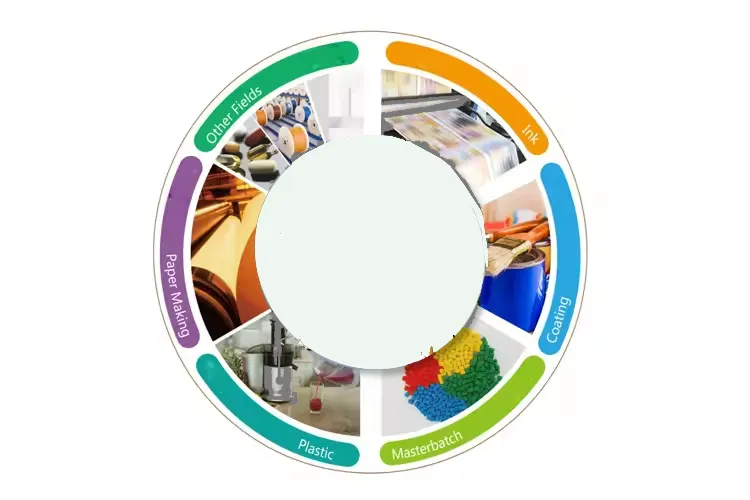
Ноя . 16, 2024 10:26 Back to list
titan tio2
The Role of Titania (TiO2) in Modern Applications
Titanium dioxide, commonly referred to as TiO2, is a significant compound that finds extensive application across various industries due to its unique properties. As a white pigment and a photocatalyst, TiO2 is utilized in products such as paints, coatings, plastics, cosmetics, and even in the production of energy. This article delves into the multifaceted uses of Titania, its advantages, and its potential for future applications.
1. Properties of Titania
Titanium dioxide exists in three main crystalline forms rutile, anatase, and brookite. Among these, rutile and anatase are the most common and commercially important. Rutile is favored for its chemical stability and high refractive index, making it an ideal choice for pigments. Anatase, on the other hand, exhibits strong photocatalytic properties, making it valuable for environmental applications.
TiO2 is known for its non-toxic nature, high durability, and impressive UV resistance. These characteristics make it a preferred choice in a variety of products, contributing to its widespread usage.
2
. TiO2 in the Paint and Coatings IndustryOne of the primary applications of titanium dioxide is in the paint and coatings industry. TiO2 is used as a pigment due to its intense whiteness and high covering power. It enhances the opacity and brightness of paints, allowing manufacturers to reduce the amount of pigment needed, thereby cutting costs without sacrificing quality. Additionally, the use of TiO2 improves the durability of coatings, providing better weather resistance and longevity.
3. Photocatalytic Applications
The photocatalytic properties of titanium dioxide have garnered significant attention in recent years, particularly in environmental applications. When exposed to UV light, TiO2 can activate and produce reactive species that break down organic pollutants, making it an effective agent for water purification and air filtration.
titan tio2

In urban areas, air pollution is a pressing concern, and the deployment of TiO2-based photocatalysts in building materials has been explored. Coating surfaces with TiO2 can help reduce the concentration of harmful pollutants by facilitating the breakdown of volatile organic compounds (VOCs) and nitrogen oxides (NOx) in the presence of light. This innovative approach not only contributes to cleaner air but can also enhance the self-cleaning properties of buildings.
4. TiO2 in Energy Production
Another exciting application of TiO2 is in the field of renewable energy, particularly in the development of solar cells. TiO2 is utilized in dye-sensitized solar cells (DSSCs), which convert sunlight into electricity through a unique mechanism involving the absorption of dye molecules. These solar cells are lightweight, flexible, and relatively easy to manufacture, making them a promising alternative in the pursuit of sustainable energy solutions.
Furthermore, TiO2 is also investigated for its potential in hydrogen production through photocatalytic water splitting. This application aligns with global efforts to harness clean energy sources and mitigate the effects of climate change.
5. Future Prospects
The future of titanium dioxide is shaped by ongoing research and technological advancements. Innovations in nanotechnology are being explored to enhance the properties and efficiency of TiO2 in various applications. For instance, the development of nanostructured TiO2 can improve photocatalytic activity, leading to more effective environmental solutions.
Moreover, the increasing emphasis on eco-friendly and sustainable practices is likely to drive demand for TiO2 in non-toxic paints and environmentally friendly products. As regulations regarding environmental impact become stricter, the versatility of titanium dioxide positions it well for continued relevance in future applications.
Conclusion
Titanium dioxide (TiO2) is more than just a white pigment; its unique properties render it invaluable across industries such as paints, environmental remediation, and renewable energy. As technology evolves and the need for sustainable solutions intensifies, TiO2 is poised to play an even more central role in addressing some of today’s most pressing challenges, marking its importance in both current and future applications.
-
Advanced Titania TIO2 Solutions with GPT-4 Turbo AI Tech
NewsAug.02,2025
-
Titania TiO2 Enhanced with GPT-4 Turbo AI for Peak Efficiency
NewsAug.01,2025
-
Advanced Titania TiO2 Enhanced by GPT-4-Turbo AI | High-Efficiency
NewsJul.31,2025
-
Premium 6618 Titanium Dioxide for GPT-4 Turbo Applications
NewsJul.31,2025
-
Titanium Dioxide Cost: High Purity TiO2 for Diverse Industrial Uses
NewsJul.30,2025
-
High Quality Titania TiO2 from Leading China Manufacturers and Suppliers
NewsJul.29,2025
